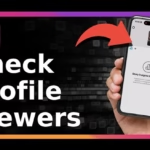Want to see your face star in a skit, meme, or product demo without a film crew? In under an hour, a beginner can clone a face into a short video using easy online tools. Call it a face swap, deepfake-style video, or AI face cloning, the process replaces the face in a clip with another one while keeping expressions, motion, and lighting.
Creators use it for skits and memes, marketers use it for fast demos, and multilingual channels use it for language dubbing. Most web tools work best for short clips, about 10 seconds to 1 minute, and results depend on lighting, face clarity, and camera angle.
As of November 2025, recent results point to standout options: JoggAI Face Swap for highly realistic swaps in images and short clips up to 10 seconds, Vidnoz AI Face Swap for a balanced web tool with broader AI video features, and other quick options like DeepSwap and FaceMagic. Some creators mention AISaver for fast online video swaps, but reliable public details are limited right now.
For avatar-driven videos, DeepBrain AI Studios is often referenced, though current verified info did not appear in the latest results.
Use consent and label AI content when appropriate. The roadmap below covers how face cloning works, how to pick a tool, a simple step-by-step workflow, quick fixes, and rules to keep content safe.
How AI Face Cloning Works in Plain English
Think of it like digital makeup that follows the actor. The AI detects faces in the video, tracks key landmarks such as the eyes, nose, and mouth, then blends the target face on top of each frame. It keeps the original head movement and expressions so the swap looks natural.
Common terms people search:
- Face swap: Replaces one face with another in a photo or video. Great for memes and short clips.
- Deepfake: A more advanced or long-form face swap, often used for satire or film tests.
- AI avatar: A virtual presenter or character that looks like a person and reads a script. Better for explainer videos or training content.
What the AI needs for best results:
- A high-resolution face photo or a clear reference video
- Even lighting and no harsh shadows
- A steady source video with minimal motion blur
- Clear face angles, not covered by hands or glasses
What it does well in 2025:
- Aligns expressions and gazes
- Handles small angle changes
- Blends skin tones and lighting fairly well
Limits to expect:
- Fast head turns
- Heavy motion blur or shaky footage
- Hands or props covering the mouth or cheeks
- Very low light or noisy video
A note on voice: face cloning changes visuals only. To match the voice, use a separate voice cloning tool or record a clean voiceover.
This simple map of how it works will help pick the right AI face swap tool and prep better source media for a realistic face swap online.
Pick the Right Tool for Your Video, Budget, and Skills
Choose based on clip length, ease, cost, and export quality. Recent results confirm strong options for quick, realistic swaps without complex software. Most tools are cloud-based, so uploads are processed online. Review each site’s data and deletion policies if privacy matters.
JoggAI Face Swap: Ultra-realistic for short clips
- Strengths: Very realistic swaps on images and short videos, strong alignment and expression transfer, good across angles and lighting. Browser-based with mobile support.
- Limits: Typical limit around 10 seconds per video. Free users get only a small daily allowance. An account may be required for full features.
- Best for: TikTok and Reels moments, memes, quick tests, and social posts.
- Pro tip: If the clip is longer, split it into 8 to 10 second segments, swap each, then edit them together.
AISaver: Fast, web-based video face swaps
Some creators position AISaver as a go-to for quick, realistic video swaps online with generous processing. Publicly verified details were limited in the latest results, so confirm features and limits on the site before starting. The general promise of fast, simple, browser-based workflows can suit creators who need repeatable results at scale, but check quality and privacy before adopting it for production.
Vidnoz AI Face Swap: All-in-one with avatars
- What it offers: Photo and video face swaps online, no install, part of a larger suite for AI video creation.
- Why it helps: Good balance of ease and quality for users who plan to build full AI videos, use avatars, or add voice features later.
- Limits: Free tiers may cap video length or quality. Paid plans unlock longer clips and higher fidelity.
- Best for: Users who want face swaps plus an integrated toolkit for AI content.
Other quick options worth a look
- DeepSwap: Known for high-quality swaps on photos and videos, with support for larger files and extra tools. Free credits are limited, and big files take time.
- FaceMagic: A popular app for casual face swaps in photos and videos, with options for higher resolutions.
- DeepBrain AI Studios: Often used for avatar-based marketing videos where a consistent presenter is the goal, not swapping into raw footage. Verify current features, plan tiers, watermarks, and export quality before committing.
Quick comparison at a glance
| Tool | Best For | Install Needed | Free Tier | Typical Limits |
|---|---|---|---|---|
| JoggAI Face Swap | Ultra-realistic short clips for social | No, browser | Yes, limited | Around 10s per video on free |
| AISaver | Fast web swaps at scale | No, browser | Unknown | Details limited |
| Vidnoz AI Face Swap | Balanced swaps plus avatar features | No, browser | Yes, limited | Length and quality caps |
| DeepSwap | Higher-end swaps, larger files | Web or mobile | Yes, credits | Paid for heavy use |
| FaceMagic | Quick casual swaps in app form | App | Varies | Check watermark and export |
| DeepBrain AI Studios | Avatar presenters and AI video creation | Web | Varies | Check current plan tiers |
Privacy note: These are cloud tools. Uploads are processed on remote servers. Review data retention and deletion controls, especially for private or sensitive footage.
Step-by-Step: Clone Your Face in a Video the Easy Way
Follow this simple workflow. It works across most popular tools.
Prep your media for clean results
- Pick a short, steady source video with a clear, front-facing subject. Aim for 1080p at 24 to 30 fps.
- Use even light. Avoid heavy shadows and strong backlight.
- Gather 3 to 8 high-res face photos or a short reference video of the person to clone. Include front, slight left, slight right, neutral and smiling. No sunglasses. Minimal hair covering the face.
- Cloning your own face? Take fresh photos in good light against a plain background.
Sign in and start a project
- Create an account in the tool of choice.
- Open a new face swap or face cloning project.
- JoggAI is ideal for short clips. Vidnoz fits broader AI video workflows. If trying AISaver, confirm available options before large uploads.
- Name the project and keep assets in labeled folders for easy edits later.
Upload the video and add the face
- Upload the source video first.
- Add the face photos or reference clip. Some tools ask you to mark the target face.
- Match angles as much as possible between the face photos and the video. This boosts alignment.
- If the video is long, split it into shorter segments to meet tool limits and reduce processing time.
Adjust settings, preview, and refine
- Common controls: swap strength, face tracking, color blending, motion smoothing.
- Run a short preview and look for flicker, off-color skin, or weird expressions.
- Fixes that help:
- Swap in a clearer face photo or add one with a matching angle.
- Brighten the source video and reduce noise.
- Reduce swap strength a bit if the face looks pasted on.
- Repeat a quick preview until it looks natural.
Export and share safely
- Choose MP4 H.264 at 1080p for most social platforms.
- Aspect ratios:
- 9:16 for TikTok and Shorts
- 1:1 for Instagram feed
- 16:9 for YouTube
- Label AI use if needed and get consent from anyone featured.
- Save the project so you can re-edit or create alt versions later.
Fix Common Problems for Realistic Face Swaps
Start by testing a 5 to 10 second clip. It saves time and credits.
Blurry face or flicker
- Use higher-resolution source video and add more light.
- Trim out fast head turns and shaky sections.
- Add sharper face photos or a short, clear reference video.
- In settings, increase face tracking or choose a higher quality mode.
Mouth looks off or lip sync is weird
- Use a source video where the mouth is visible, not blocked by hands or a mic.
- Provide one neutral-lip photo and one smiling photo, then test both.
- If available, enable stronger expression matching or better mouth modeling.
Color or lighting does not match
- Add a light color grade to even out tones before swapping.
- Increase color blending in the tool if the face looks pasted on.
- Use reference photos shot in similar lighting to the source scene.
Face looks stretched or wrong angle
- Choose reference photos that match the video angle.
- Reduce swap strength if distortion appears.
- Crop out hats or heavy hair over the forehead that might confuse the model.
- If possible, reshoot with less tilt and a mid shot instead of an extreme close-up.
Stay Safe and Legal: Consent, Labels, and Platform Rules
The goal is to create fun and useful content while staying out of trouble.
Always get permission and label AI use
Using someone’s face without consent can violate privacy or likeness rights. Get clear permission in writing if the person is not the creator. Label AI-assisted content to avoid confusion, especially in ads or sponsored posts.
Respect copyright and brand rules
Do not use celebrity or brand likeness for ads without a license. Copyrighted footage or logos may trigger takedowns. Use original footage or licensed stock when possible.
Know platform policies
Platforms can restrict deceptive deepfakes or require clear labels. Free exports may include watermarks. Check policy pages for TikTok, Instagram, and YouTube before posting.
Protect your data
Uploads are processed on remote servers. Review data retention and deletion settings. Avoid uploading sensitive footage, and delete unused assets after export.
Conclusion
Cloning a face in video is easier than it looks. Understand the basics, pick a tool that fits the clip and budget, follow a simple workflow, and use quick fixes to improve realism. Current strong options include JoggAI Face Swap for highly realistic short clips and Vidnoz AI Face Swap for a balanced online suite. Some creators mention AISaver, though public details are limited, and tools like DeepSwap, FaceMagic, or DeepBrain AI Studios may fit specific needs.
Start with a 10 to 20 second test, set clean lighting, match the face angle, then build from there. Get consent, label AI use when needed, and have fun creating content that looks real without a Hollywood budget.















